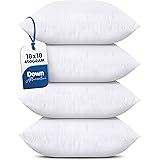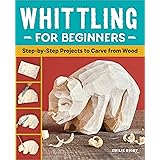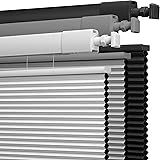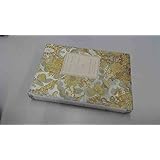The accompanying video offers a glimpse into a variety of ingenious DIY repair tips and tool hacks designed to streamline your home maintenance efforts. Mastering practical, everyday solutions can significantly reduce costs and extend the lifespan of your belongings. This article will delve deeper into the innovative techniques showcased, providing detailed explanations and further applications for these essential home improvement strategies.
Smart DIY Solutions for Common Household Fixes
Engaging in effective home maintenance does not always necessitate specialized tools or extensive training. Many common issues can be addressed with clever applications of readily available materials. Understanding the principles behind these DIY repair tips empowers homeowners to tackle problems with confidence and creativity, transforming everyday items into powerful solutions.
Creative Adhesion and Filling with Acetone and Styrofoam
One remarkably versatile technique involves combining acetone with Styrofoam to create a potent adhesive or gap-filling compound. This method exploits acetone’s solvent properties, which rapidly dissolve polystyrene foam into a thick, paste-like substance. Consequently, this mixture can be effectively utilized for repairing cracks in plastic items, filling small voids, or strengthening fragile joints.
To prepare this compound, gradually add small pieces of Styrofoam to a container of acetone, allowing it to dissolve completely. The viscosity of the resulting paste can be controlled by adjusting the amount of Styrofoam used. It forms a durable bond upon drying, offering a lightweight yet strong repair solution. Furthermore, the application of this mixture often yields a robust connection that integrates seamlessly with the original material.
However, extreme caution is paramount when working with acetone. This chemical is highly flammable and produces strong fumes, necessitating excellent ventilation. Always wear appropriate personal protective equipment, including heavy-duty gloves and crucial eye protection, to prevent skin contact and irritation. Therefore, this activity should be performed in a controlled environment, much like the video emphasizes for safety.
Mastering Basic Adhesion with Glue Sticks and Glue Guns
The humble glue stick, often associated with children’s crafts, possesses surprising utility in the workshop, particularly for temporary holds or cleaning tasks. For instance, as demonstrated, a standard glue stick can be instrumental in cleaning abrasive surfaces such as a belt sander. The warmth generated by the sander’s operation softens the glue, allowing it to pick up accumulated sawdust, resin, and other debris without damaging the abrasive grit.
Glue guns, conversely, offer a more permanent and robust adhesive solution for a multitude of DIY projects. They provide rapid bonding for various materials including wood, fabric, plastic, and ceramics. This makes them ideal for quick repairs, securing loose components, or crafting. When selecting a glue gun, consider models with adjustable temperature settings, as different glues and materials may require specific heat levels for optimal adhesion.
Essential Tool Hacks for Enhanced Workshop Efficiency
Optimizing your workspace and protecting your tools are fundamental aspects of efficient home maintenance. Simple modifications and creative uses for everyday objects can significantly improve safety, organization, and the longevity of your equipment. These tool hacks are designed to prevent damage and streamline your repair processes.
Creative Protection and Stability Solutions with Household Items
Pool noodles are remarkably adaptable for protective purposes, extending far beyond their intended use in water. They can be slit lengthwise and fitted onto sharp edges of tables, tools, or furniture to prevent accidental bumps and scratches. Furthermore, they are excellent for stabilizing oddly shaped items during transport or storage, absorbing shock and preventing movement. Consequently, this simple item offers significant benefits in a busy workshop or moving scenario.
PVC pipes also offer a cost-effective and durable solution for organizing tools and protecting delicate items. Shorter sections can be used as protective sleeves for cutting tools, preventing accidental cuts and keeping blades sharp. Longer sections can be fashioned into custom storage solutions for various tools, ensuring everything has its place. Moreover, their rigid structure makes them perfect for creating custom jigs or guides for specific cutting tasks, enhancing precision and safety.
Ordinary tape, while seemingly basic, is indispensable for numerous DIY repair tips and household projects. Masking tape is ideal for marking cutting lines or protecting surfaces during painting. Electrical tape provides insulation for wiring and can temporarily secure loose connections. Duct tape, renowned for its strength, is perfect for temporary fixes, bundling items, or reinforcing weak points. Therefore, always keeping a variety of tapes on hand is a smart home maintenance strategy.
Enhancing Durability and Connection with Heat Shrink Tubing
Heat shrink tubing represents an incredibly effective method for insulating, protecting, and strengthening electrical connections and tool handles. Made from a thermoplastic material, it shrinks considerably when heated, creating a tight, protective seal. This process significantly enhances the durability and safety of components it covers.
Primarily, it is utilized for electrical insulation, preventing shorts and protecting wires from abrasion and moisture. It also provides excellent strain relief for cables, reducing the likelihood of breakage at connection points. Furthermore, heat shrink tubing can be applied to tool handles to improve grip, repair minor damage, or simply add a protective layer against wear and tear. When selecting heat shrink tubing, consider the shrink ratio, which indicates how much it will reduce in diameter, and whether an adhesive-lined option is required for a more waterproof seal.
General Workshop and Tool Maintenance Best Practices
Maintaining a clean and organized workshop is just as crucial as having the right tools for effective home maintenance. Proper care extends the life of your equipment and ensures readiness for any DIY repair tips you undertake. A frequently overlooked aspect is the regular cleaning and inspection of tools after each use.
An “old brush,” for instance, can be repurposed for cleaning debris from tools, applying lubricants, or even dusting off work surfaces. This simple habit prevents grime buildup that can hinder tool performance and shorten their lifespan. Regularly cleaning abrasive surfaces, like that of a belt sander, ensures optimal functionality and efficiency during operation. Consequently, clean tools operate more safely and deliver superior results in all your DIY repair projects.
Storage is another key factor in tool longevity. Protect cutting edges with sleeves, store power tools in their cases to prevent dust accumulation, and organize smaller items in bins or drawers. This systematic approach not only prolongs the life of your tools but also makes your workshop a more pleasant and productive environment. Adhering to these practical tips forms the bedrock of successful DIY endeavors and effective home maintenance.











